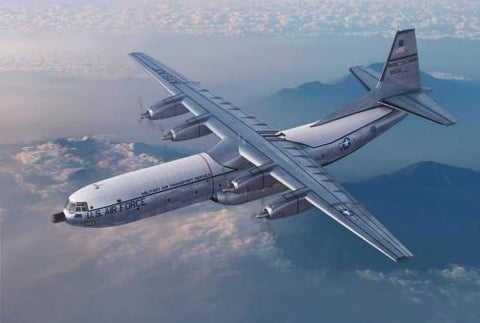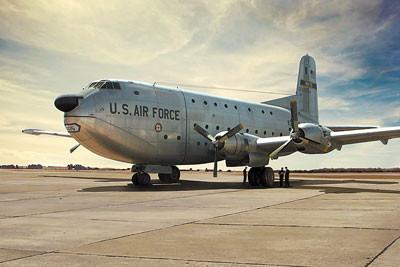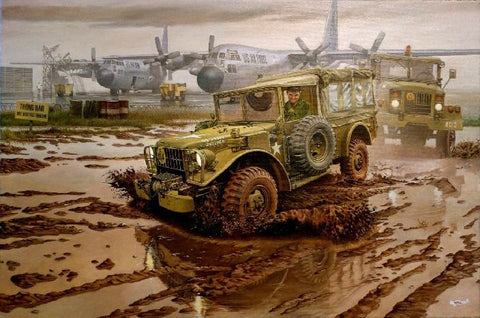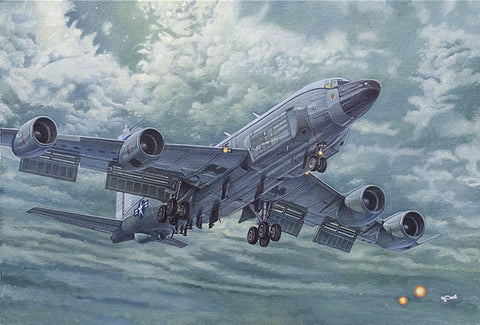
Roden Aircraft 1/32 Reims Cessna FTB337G Lynx Bush War Rhodesian Air Force Light Attack War Aircraft Kit
Model Airplane Depot
In the late 1940s, shortly after World War II, the British government faced the complex problem of the gradual transfer of independence to former colonies. The metropolis that had been devastated by a difficult war could no longer manage so closely the peoples that were often remote from its rule, and in a climate of ever-growing national resistance by indigenous peoples, the issue of the complete transfer of rights to manage these territories was only a matter of time. Some of the former colonies proclaimed independence early on, although almost immediately they encountered problematic situations in their region, ranging up to full-fledged military conflicts with their neighbors. Others, for one reason or another, were on the contrary in no hurry to distance themselves from London. One of these territories was Southern Rhodesia, although it could not be called a colony in the full sense of the word: at the end of the nineteenth century, Cecil Rhodes entered into an agreement with African King Lobengula on the economic development of territories rich in minerals, and soon the army of Rhodes' own British South African Company occupied the territory of Great Zimbabwe. Numerous indigenous attempts to rebel against white colonialists were quickly suppressed by Rhodes' Army, and complete colonization of these lands soon followed. London did not particularly interfere in Rhodes' actions, since it provided significant financial support to government officials in the capital, and the male population of Rhodesia would soon take an active part in both the First and Second World Wars, which would also then produce a favorable government attitude to this distant "semi-colony with a separate self-government". In 1922, after a referendum, Southern Rhodesia did not enter the newly formed South African Union, and instead became a separate self-governing territory, remaining nominally part of the possessions of His Majesty. During the Second World War, South Rhodesia was a major supplier of food to the British Army and an important training base for Royal Air Force pilots. The talks between the leadership of Rhodesia and the British government about full independence were delayed for many years. In 1965, the new Prime Minister of Rhodesia, Ian Smith, unilaterally declared the independence of his country, which was not recognized by either the United Kingdom or any other country. By that time, the Soviet Union had already entered into an active political game on the African continent, and its provocative policy of incitement of the black indigenous population against the white minority began to produce more and more significant results, resulting in a multi-year bloody civil war. Smith's policy towards indigenous black people was not as severe as in South Africa - black people were represented in the government, police and army. Nevertheless, numerous black nationalist organizations, calling themselves "national armies for deliverance", although in fact all but terrorist groups, the existence of which was possible only with the help of backing from the outside (the primary sponsors of armed insurgency were the USSR and China), proclaimed a "war for the complete liberation of their country from the white." The two principal revolutionary leaders Joshua Nkomo and Robert Mugabe were not averse to any method of conducting this war, which obviously immediately forced the white minority into conducting an anti-terrorist operation against the black rebels. The world community, in the form of the UN, expressed its concern about the situation in Southern Rhodesia, and as so often in the history of the organization, it preferred a policy of sanctions against the government, trying to persuade them to engage in dialogue with their armed opponents. In 1968, the UN imposed full sanctions on any co-operation of the world community with the Government of Rhodesia, thus taking a major step towards forcing a resolution in the near future. The Army of Southern Rhodesia, which was relatively small (up to 10,000 soldiers in general), concentrated on conducting a war with insurgents by deploying special forces supported by aviation. This tactic proved to be quite successful, but Rhodesia's aviation was already rather outdated from the outset, consisting mainly of aircraft types that had long been withdrawn from the UK service. Under the terms of total sanctions, the purchase of new weapons was absolutely impossible. The management of adjacent South Africa, which also had increasing confrontation with the world community, over apartheid, nevertheless managed to transfer helicopters and trained pilots to Rhodesia; in addition, through unofficial mediators, it was possible to acquire dual-purpose aircraft in some Western European countries, which were de facto civilian, but could be easily reconfigured for military purposes. One such aircraft was the Reims 337G, the French license build of the American lightweight multipurpose Cessna Super Skymaster 337. In 1975, it was possible to purchase 18 such machines, one of which was lost while flying over Mozambique. All the other 17 succeeded in arriving at new bases and were soon involved in anti-terrorist operations. The civilian airframes were converted for their future missions - two 7,7 mm machine guns in containers were mounted above the cockpit over the wings, a number of pylons for hanging various types of weapons were mounted under the wing - from light bombs to cassette bombs, unguided rocket pods as well as special Mini Golf bombs, which turned out to be very effective weapons. The right row of seats in the cabin in almost all 17 planes were dismantled to allow for installing litters to evacuate wounded special forces directly from the battlefield. Also, the engine exhaust outlets were shielded to reduce infrared radiation, as irregular combatants at that time already widely used the Soviet "Strela" MANPADS against government aviation. The first application of the new machine, which received the semi-official name of Lynx, revealed it to be a very effective weapon for anti-partisan warfare. The ability to launch attacks from low altitudes, a respectable turn of speed, low visibility in the face of ground to air defense, and fairly high survivability made this aircraft indispensable in all significant operations against Nkomo and Mugabe. Particularly successful were attacks with the use of napalm containers - when they were used whole units of insurgents seemed to be paralyzed because the chances of surviving Lynx attacks with napalm were virtually non-existent. Another successful innovation was the Mini Golf bomb with a long, 1200-millimeter detonator in front of the body of the bomb itself. When dropping it from the plane under a parachute, the pin struck the surface of the ground, and detonation of the explosive occurred at a height of a meter above the surface. Due to the special composition of the explosive there was an effect, which was compared with the "mini-explosion of a nuclear bomb" - in the strike zone, this weapon destroyed absolutely everything alive without exception in an area of 100 by 150 meters. The use of this type of weapon was only occasional, but it had a very great psychological impact on Mugabe's armed groups. Another important role of these planes, just as with their US sibling the O-2, was to direct more heavily armed planes on to a target. A Lynx flew directly to a target and marked it with light or phosphorus bombs, and after that, there appeared a Hunter or a Canberra, which completed the mission. Also, very often, Lynx pilots flew in "free hunting" fashion, patrolling areas where insurgents were crossing the borders of the country from neighboring Mozambique or Zambia. In the context of free radio broadcasting, and performance of tasks at low altitudes, these machines had a fairly significant success in the deterrence of enemy formations. However, the history of the war in Southern Rhodesia for the right to be a separate country proved to be quite tragic. The world community, divided by Cold War rivalry, not wanting to give the Soviet Union greater influence in the countries of Africa, would not lift sanctions against Southern Rhodesia. The lack of fuel for the army and the decline of the economy forced the white minority of the country to sit down at a negotiating table with the indigenous population, which at that moment was personified by Robert Mugabe. In 1979, after a general election, a black majority came to power, and although the white minority attempted to consolidate their rights, in reality, the situation began to change very rapidly and very fast. After 1980, Robert Mugabe, who had succeeded in destroying all his rivals for power, became the sole leader of the country. The Rhodesian Army was disbanded, and the revolutionary Zimbabwean National Army replaced it, incorporating the original name of this territory. Former pilots of the Rhodesian Army left the country on their way to South Africa, the United Kingdom and the United States for good, and soon their example was imitated by a number of officers from other military forces. Zimbabwe's aviation, which included the Lynx, was now re-formed under the new structure, but soon most of the old types were replaced by Soviet aircraft and helicopters, provided to the "fraternal people" by the generous sponsors of revolution in the Kremlin. To date, this once prosperous country of the African continent, infinitely rich in many minerals and very fertile soils, which at one time was a food exporter, as well as a center for the mining of valuable metals and precious stones, is one of the poorest countries in the world with an overwhelming annual inflation, unbridled corruption, and also with a rapid pace of population growth, mainly amongst its poorest peoples. By the early 2000s, almost all the white people had already left their former homeland. The nearly forty-year rule of Mugabe, removed from power only in 2017, turned it not only into a country with a changed name. The tendency of the world to close its eyes in the face of the support of terrorism by one of the largest countries in the world, which destroyed a flourishing Rhodesia forty years ago, unfortunately, continues in our time, although no longer racial in a national context.
- Engraved panel lines
- Detailed (cockpit, fuselage and passenger area with seats, engine and assemblies)
- Separate (propeller blades, doors, trailing edge flaps, rudders)
- Set undercarriage
- Wing-mounted gun pods, pylons, bombs, transparent (lights, windows, canopy's)
- Decals and markings for (3) aircraft:
- FBT337G Lynx , #Sqn RhAF, late 1979
- FBT337G Lynx , #Sqn of Zimbabwe Air Force, October 1981
- FBT337G Lynx , Air Force of Zimbabwe , late 1982






